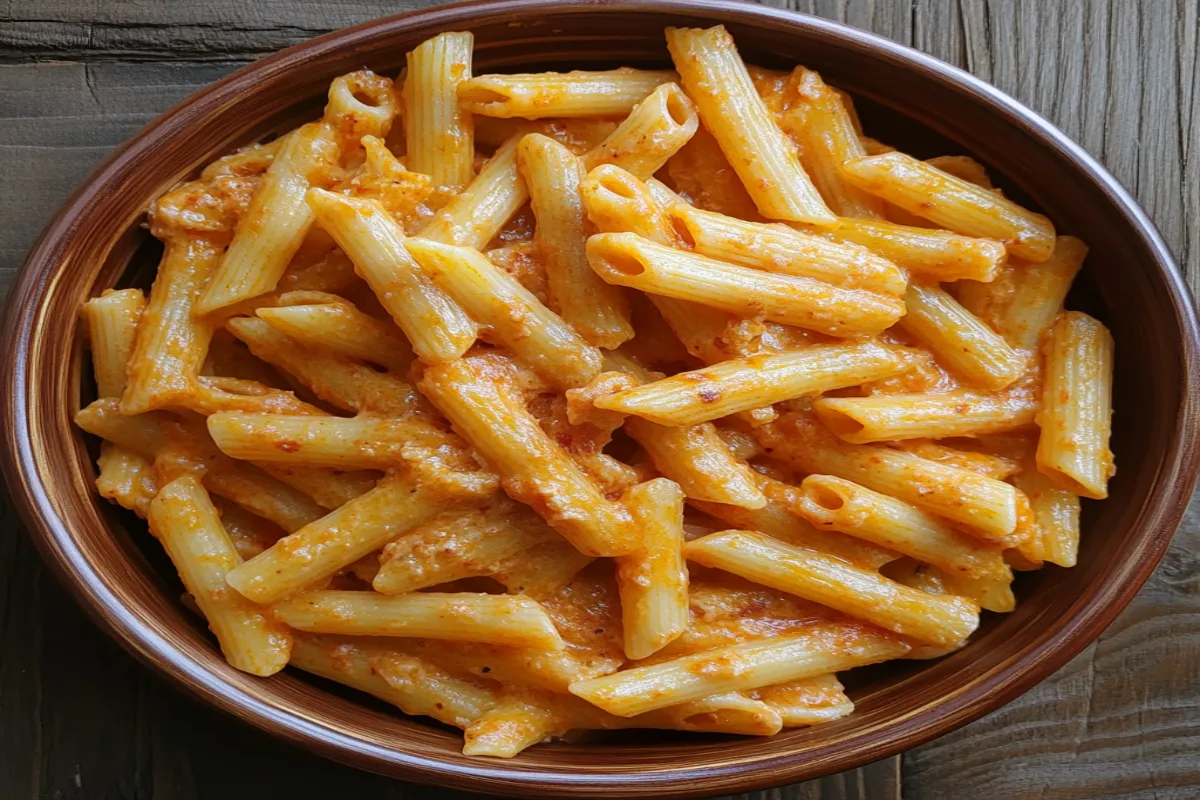Pasta is a staple food worldwide, and its versatility allows for countless variations in taste, texture, and presentation. However, when it comes to mixing different types of pasta, some people are hesitant. In this article, we’ll explore the possibility of combining penne and macaroni—two of the most popular pasta types. We will also discuss how to do it effectively and provide delicious recipes you can try at home.
By the end of this article, you’ll have a clear understanding of whether mixing these two pasta shapes is a culinary success or failure, along with practical tips and links to relevant recipes.
Understanding Penne and Macaroni
Before discussing whether you can mix penne and macaroni, it’s important to understand their characteristics:
- Penne: This pasta is tube-shaped with a ridged surface, which helps sauces adhere better. It is a popular choice for dishes that require thicker sauces, such as penne arrabbiata or baked pasta dishes. The ridged texture of penne makes it excellent for holding onto hearty, chunky sauces.
- Macaroni: Typically smaller, elbow-shaped, and smoother, macaroni is best known for dishes like macaroni and cheese. Its smooth surface means it doesn’t hold onto sauces as well as penne, but it’s perfect for creamy, cheesy sauces.
The question is, can these two distinct shapes work well together in the same dish?
Can You Mix Different Pasta Shapes?
The short answer is, yes, you can mix penne and macaroni. Many culinary experts advocate mixing different pasta shapes, especially when you want to introduce variety in texture to a dish. Both penne and macaroni belong to the short pasta category, which makes them relatively easy to combine.
However, there are a few things to keep in mind:
- Cooking Times: Penne is usually thicker than macaroni, so it may take a bit longer to cook. To avoid overcooking one type while undercooking the other, you can either cook them separately or adjust the cooking times. One way to do this is to start cooking the penne first and add the macaroni a few minutes later.
- Sauce Compatibility: According to experts, the sauce you choose plays a significant role in how well different pasta shapes mix. Thicker, chunkier sauces, like marinara or Alfredo, are ideal for penne, while macaroni is more suited for cream-based or cheese sauces. Mixing both pasta types could give your dish a variety of textures that complement a versatile sauce.
- Consistency in Size and Shape: When combining pasta shapes, try to stick to similar-sized shapes to ensure even cooking. Since both penne and macaroni are tubular, albeit of different thicknesses, they tend to pair well together. It’s not advisable to mix very different shapes, such as long pasta (like spaghetti) with short pasta (like penne or macaroni), as they cook differently.
Best Practices for Mixing Penne and Macaroni
Adjust Cooking Times
One of the primary challenges of mixing different pasta shapes is achieving the perfect texture. Since penne is thicker and takes longer to cook than macaroni, you’ll need to adjust your cooking method:
- Staggered Cooking: Start boiling the penne and add the macaroni after a few minutes. This ensures both types reach the desired level of al dente at the same time.
- Cooking Separately: Another approach is to cook them separately and combine them after draining. This allows for better control over each pasta’s texture and reduces the risk of overcooking.
Choosing the Right Sauce
Mixing penne and macaroni opens up opportunities to experiment with a range of sauces. As mentioned earlier, pairing the right sauce is crucial to creating a balanced dish.
For example, if you’re making a cheesy casserole, both pasta shapes work well because they can hold onto creamy and rich sauces. For a more tomato-based dish, opt for marinara or meat sauces that can coat the ridges of penne while filling the curves of macaroni. This guide offers more insights into how to choose sauces that complement different pasta shapes.
Combine Similar Pasta Shapes
As a general rule, when mixing pasta shapes, stick to those that are similar in size. Since penne and macaroni are both short, tube-shaped pastas, they pair well together. Combining very different shapes, such as fettuccine with penne, can lead to inconsistent textures and cooking issues.
Recipe Ideas Featuring Mixed Pasta Shapes
Mixed Pasta Salad
This light, refreshing pasta salad combines the best of both penne and macaroni for a textural contrast.
Ingredients:
- 4 ounces penne
- 4 ounces macaroni
- 1 cup cherry tomatoes, halved
- 1 cup cucumbers, diced
- 1/2 cup black olives, sliced
- 1/4 cup feta cheese
- Olive oil and lemon vinaigrette
Instructions:
- Cook the penne and macaroni according to package instructions, staggering the cooking times to ensure both are al dente.
- Drain and rinse under cold water.
- Toss the pasta with vegetables, olives, and feta cheese.
- Drizzle with the vinaigrette and serve chilled.
Baked Mixed Pasta with Cheese
This baked dish is perfect for a hearty family dinner.
Ingredients:
- 1 cup penne
- 1 cup macaroni
- 2 cups marinara sauce
- 1 1/2 cups mozzarella cheese
- 1/4 cup grated Parmesan
Instructions:
- Preheat the oven to 375°F.
- Cook penne and macaroni, ensuring they’re al dente.
- In a large baking dish, combine the cooked pasta with marinara sauce.
- Layer with mozzarella cheese and sprinkle Parmesan on top.
- Bake for 20 minutes or until golden and bubbly.
For more recipe inspiration, check out this old-fashioned baked macaroni and cheese recipe, which provides great tips for perfecting your pasta bake.
Nutritional Considerations for Mixing Pasta
When combining penne and macaroni, the nutritional content doesn’t change significantly. Both are made from durum wheat semolina and have similar nutritional profiles. However, if you’re looking to make a healthier version, consider using whole grain or gluten-free versions of each.
Nutritional Benefits of Whole-Grain Pasta
- Higher Fiber Content: Whole-grain versions of penne and macaroni contain more fiber, which helps with digestion.
- Lower Glycemic Index: Whole grains generally have a lower glycemic index, which means they cause a slower rise in blood sugar levels.
- Rich in Nutrients: They are also richer in minerals like magnesium and zinc compared to their refined counterparts.
Common Mistakes When Mixing Pasta Shapes
While mixing penne and macaroni can result in a delightful dish, there are some common mistakes to avoid:
- Overcooking One Type: As penne takes longer to cook, adding it and macaroni to the pot simultaneously may result in overcooked macaroni. It’s essential to stagger the cooking or cook them separately.
- Incompatible Sauces: As mentioned earlier, avoid using sauces that don’t suit both pasta types. For instance, thinner sauces won’t adhere well to the ridged texture of penne.
- Mismatched Sizes: Avoid combining long pasta with short pasta. The differences in texture can lead to an uneven mouthfeel, and the longer shapes may not cook evenly with shorter ones.

Frequently Asked Questions
Can You Mix Penne and Macaroni?
Yes, you can! Just be mindful of their different cooking times and the type of sauce you use.
What Pasta Shapes Can Be Mixed Together?
Short pasta shapes like penne, rigatoni, and macaroni work well when mixed. Their similar sizes and textures allow for even cooking and sauce distribution.
What Happens If You Mix Pasta Shapes with Different Cooking Times?
If you don’t account for different cooking times, one type of pasta might end up overcooked or undercooked. This can affect the overall texture and taste of the dish.
Conclusion
Mixing penne and macaroni is not only possible but also a great way to experiment with new textures and flavors in your pasta dishes. By adjusting cooking times, selecting the right sauce, and following best practices, you can create delicious meals that bring out the best in both pasta shapes. Whether you’re preparing a light pasta salad or a hearty baked casserole, combining these two pastas opens up endless culinary possibilities.
For more pasta tips and recipes, explore our guide to perfect macaroni dishes.

